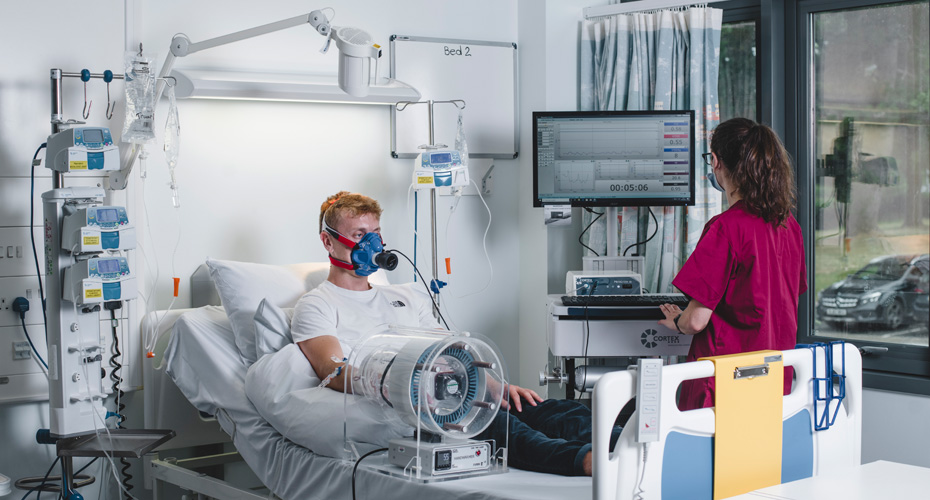Understanding mechanisms of skeletal muscle atrophy and insulin resistance across the life course
Our research
Background: reduced insulin sensitivity and type 2 diabetes
A reduction in skeletal muscle insulin sensitivity occurs with age and obesity and is a major risk factor for type 2 diabetes, one of the biggest health concerns in the developed world.
How does muscle become insulin resistant, and can nutrition delay this?
Our current projects in this area are focused on:
- how human skeletal muscle becomes insulin resistant,
- inflexibility in the ability to switch between carbohydrate and fat metabolism,
- and the role of nutrition (e.g. ketone esters, branch chain amino acids, carnitine, mycoprotein) in age, obesity, and type 2 diabetes.
It is well-established that 1 week or more of muscle disuse leads to substantial muscle atrophy and impairments in metabolic health. Importantly, this muscle atrophy is associated with a blunted muscle protein synthetic response to protein intake (i.e. anabolic resistance) and a reduced insulin-stimulated glucose uptake (i.e. insulin resistance).
As part of this research line we conduct detailed human intervention studies, using bed rest and limb immobilization models, to investigate the temporal response of muscle protein metabolism and insulin sensitivity in the first few days of muscle disuse.
This approach has provided, and will continue to provide, crucial insight into the mechanisms underlying muscle atrophy and metabolic deterioration during episodes of physical inactivity.
Current projects
BCAA: Role of branch chain amino acid metabolism in skeletal muscle insulin sensitivity in people with Type 2 diabetes
MEGA1: The effect of mycoprotein ingestion on glucose kinetics in healthy young adults
MEGA2: The effect of mycoprotein ingestion on glucose kinetics in adults with obesity
HPD: The effects of a high-protein diet from animal versus non-animal sources of protein on insulin sensitivity in people with type 2 diabetes
KES2: The effect of a ketone drink on liver glucose production in people with type 2 diabetes
KAV: The effect of muscle ketone accumulation on skeletal muscle insulin sensitivity
PIE: The impact of energy intake and short-term disuse on muscle protein synthesis rates and skeletal muscle mass in middle-aged adults.
FEMME: Effectiveness of a 12-week low-impact resistance training programme on muscle function, body composition, quality of life and muscle protein synthesis in females aged 40-60 years.
FBR: The impact of leg immobilization on postabsorptive and postprandial muscle protein breakdown in healthy young males
WTF1: The impact of Acipimox and Salbutamol supplementation on the development of insulin resistance and anabolic resistance during forearm immobilization in healthy, young volunteers
WTF2: The impact of dietary branched-chain amino acid (BCAA) restriction on the development of insulin resistance and anabolic resistance during forearm immobilization in healthy, young volunteers
SARMS: Temporal transcriptional regulation of skeletal muscle ribosome biogenesis during resistance training while consuming high protein animal or non-animal derived diets.
MURF: Investigating the relationship between FOXO3 isoforms and daily skeletal muscle protein synthesis rates in humans
MARS: Assessing the effects of 5 days of leg immobilisation prior to one and several resistance exercise bouts on human skeletal muscle protein synthesis, ribosomal capacity and biogenesis
EMBER: Muscle protein breakdown during acute recovery following eccentric exercise




